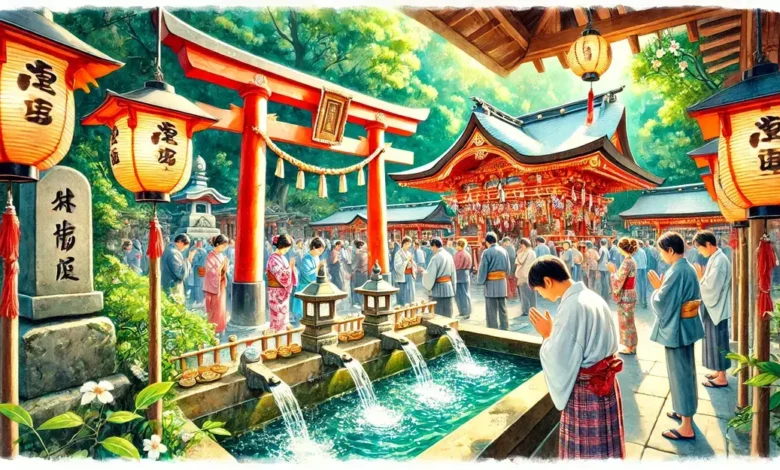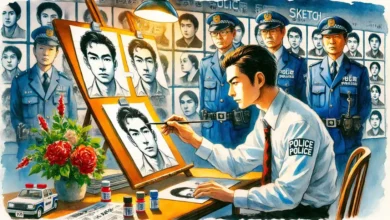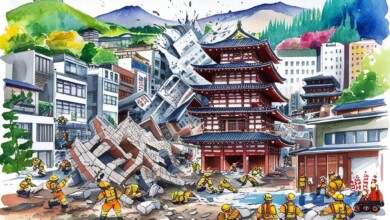How to Pray at a Shinto Shrine in Japan?

Going to a Shinto shrine in Japan is a calm and interesting experience. It lets you see the spiritual traditions of Japan. Knowing how to pray at a Shinto shrine can make your visit better. You can connect with this old practice in a respectful and meaningful way. Shinto shrines are known for their special gates called torii and peaceful surroundings. They are found all over Japan. Each one has a special connection to the gods. You might be looking for blessings, making a wish, or just enjoying the spiritual feeling.
Knowing the right way to behave and what steps to follow is very important. This includes cleaning rituals, offering prayers, and making wishes. This guide will help you understand these holy practices. You can do them with confidence and respect. This will make your visit to these holy places memorable and respectful.
Where to go
In Japan, people often go to shrines for a special reason. They might wish for a sick family member to get better fast. Or, if they’re going to have a baby, they pray for a safe birth.
Some shrines are known for certain gods, called kami. So, lots of people go there to ask the gods for help. For example, people might go to a shrine for Ebisu, the god of business. They pray for their business to do well. Or, they might go to a shrine for Tenjin, the god of learning. They pray to do well on their tests. Before you go to a shrine, think about what you’re praying for. Then, find out which god can help with that. This will help you choose the right shrine to visit.

Before you pray, purify yourself.
It’s important to be healthy when you visit a shrine in Japan. This is so you don’t bring any ‘impurity’ with you. When you get to the shrine, you’ll see a water pavilion near the entrance. It’s called a temizuya. This is where you can clean yourself before you go to see the gods. There might also be a big incense burner close by. You can use the smoke from the incense to purify yourself. This is all part of the process of visiting a shrine in Japan. It’s a special experience that you’ll remember.

Approach the haiden
In the haiden, you show respect to the kami-sama, or the gods. Inside the hall, a Shinto priest does more complex ceremonies. But, you can pray from outside too. In front of the haiden, there’s a ‘saisen-bako’. This is a box where you can give offerings. When you go up to the box, don’t stand right in front of it. There’s a special path called the ‘sei-chuu’. This is the path that the gods use to walk.

Make an offering
When you visit a shrine, you can put an offering into the saisen-bako, or offering box. Be careful not to throw your offering. This can be hard during the busy New Year season. That’s when lots of people visit the shrine for the first time in the year. You might have to stand back from the box. So, toss your money in a respectful way.
The amount of money you give is less important than how sincere your prayers are. But, some people believe certain amounts of yen can bring good or bad luck. The five-yen coin is thought to be lucky. This is because it sounds like ‘go-en’, which is the Japanese word for luck. The ten-yen coin is thought to be unlucky, even though it’s worth more. This is because it sounds like ‘tou-en’, which means your luck will be far away. It’s like when a Magic 8 Ball says, ‘outlook not so good.’
Ring the bell
If there’s a bell in front of the haiden, grab the rope with both hands. Shake it hard to call the kami-sama, or the gods. People used to think that the sound of the bell could keep away bad spirits. So, ringing the bell also helps make a clear path for the gods to come.
But, some shrines don’t have a bell. Or, the bell might be tied up and out of reach. If that’s the case, you can just skip this part and say your prayer instead. This is another important part of visiting a shrine in Japan.

二礼二拍手一礼 (Two-two-one)
In Japan, people use a special phrase to remember how to pray at a shrine. It’s called ‘ni-rei, ni-hakushu, ichi-rei’. This means ‘two bows, two claps, one bow’.
First, you bow two times to say hello to the kami-sama, or the gods. You bend at the waist to make a 90-degree angle. Keep your back straight as you do this.
Next, you clap two times to thank the kami-sama. Your hands should be at chest level and about as wide apart as your shoulders. When you clap, your right hand should be a little lower than your left. This is because the left hand stands for the kami-sama and the right hand stands for you. Clapping can also help keep away bad spirits, just like ringing bells.
Then, you say a silent prayer to the kami-sama. If it’s your first time at the shrine, you should tell the kami-sama your name and where you live. Yes, really! You should also say thank you before you ask for anything special.
This might seem strange, but there’s a reason for it. Sometimes, the kami-sama leaves the shrine in a special carrier called a ‘mikoshi’. When people carry the mikoshi around the neighborhood, the kami-sama sees who has visited the shrine and who lives there. It’s true!
There’s another reason too. In November, the kami have a big party called the Kamiari Festival. It’s held at Izumo Grand Shrine. If a certain kami has helped you or your family, it can tell the kami at your local shrine about you. Really, it’s true!
When you’re done praying, you bow one last time. It should be a deep 90-degree bow, just like before.

Exceptions
The way I told you to pray is common at most Shinto shrines. But, some shrines have their own special way to pray. One example is the Ise Grand Shrine in Mie prefecture. This is the most important Shinto shrine in Japan. The priests there follow a different pattern. It’s called ‘hachi-dohai, ya-hirade’. This means ‘eight bows, eight claps’. So, if you visit different shrines, you might see different ways to pray. It’s all part of the rich and varied culture of Japan. It’s what makes visiting these shrines so interesting and special.




